So, you've just stumbled upon a batch of wild turkey tail mushrooms. And now you're wondering how to prepare them at home.
You've come to the right place!
In this guide, we'll walk you through the steps to prepare turkey tail mushrooms for long-term storage or use in recipes or tinctures.
Let's dive in!
How to identify turkey tail mushrooms
When it comes to identifying Turkey Tail mushrooms in the wild, there are four key things to look for. You should determine the mushroom's thickness, the color patterns, the pore pattern under the mushroom, and the velvety texture on the top.
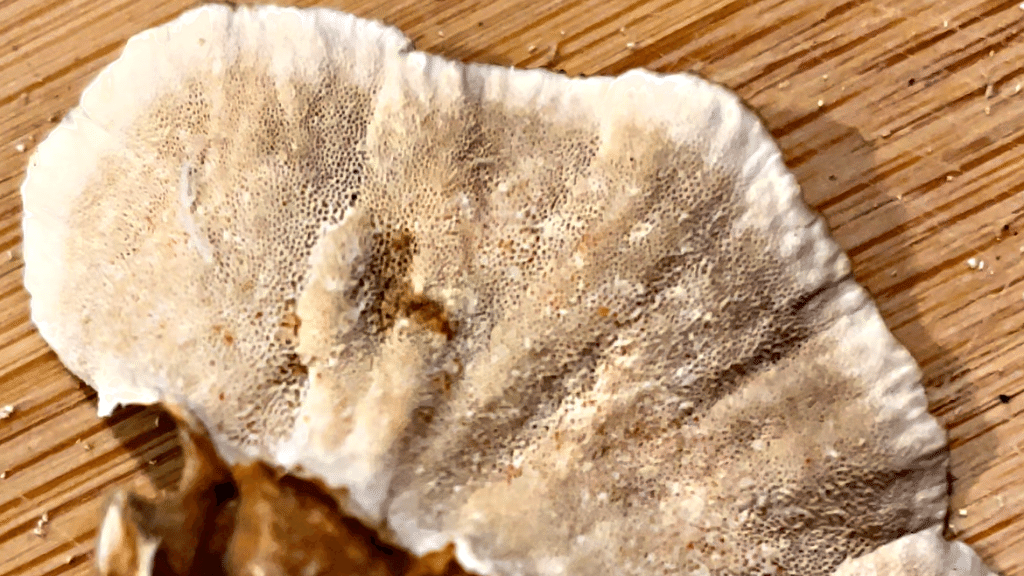
Turkey tail mushrooms look like a turkey's tail, with distinct color patterns. You are most likely to find them on fallen logs and tree stumps. Unlike some of the other functional mushrooms you might find in the wild, turkey tail mushrooms can grow and be harvested all year round!
False turkey tail (Stereum ostrea) looks quite a bit like real turkey tail. The underside of the false turkey tail will appear smooth whereas a real turkey tail mushroom will have small but visible pores.
The body of a true turkey tail mushroom should also be thin and flexible as you move and bend it. Rigidity in your mushroom may indicate a different species!
Look for a soft velvet-like top as well.
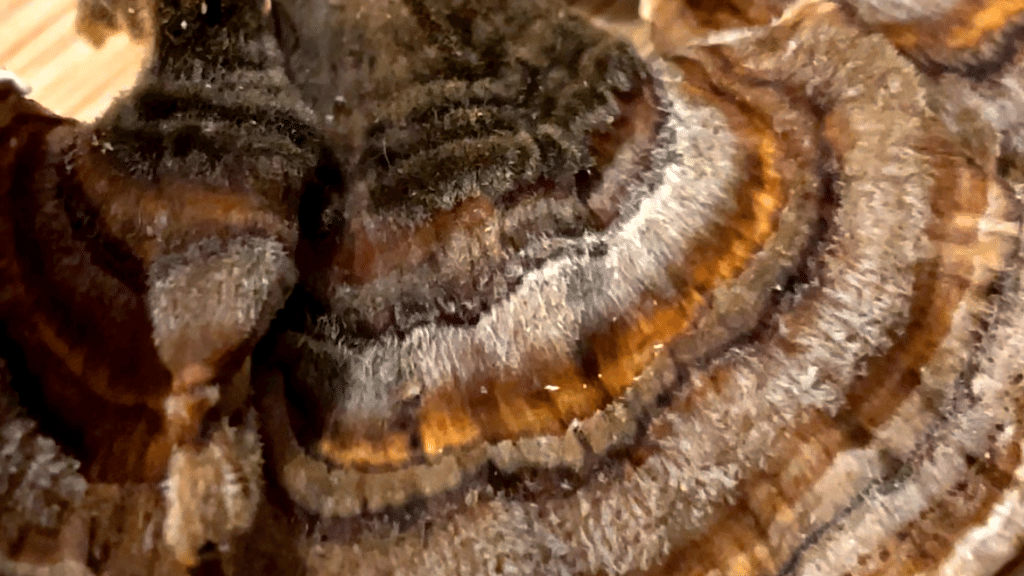
We like this 6-step identification guide to help you ensure you're harvesting turkey tail, and not one of its many look-alikes:
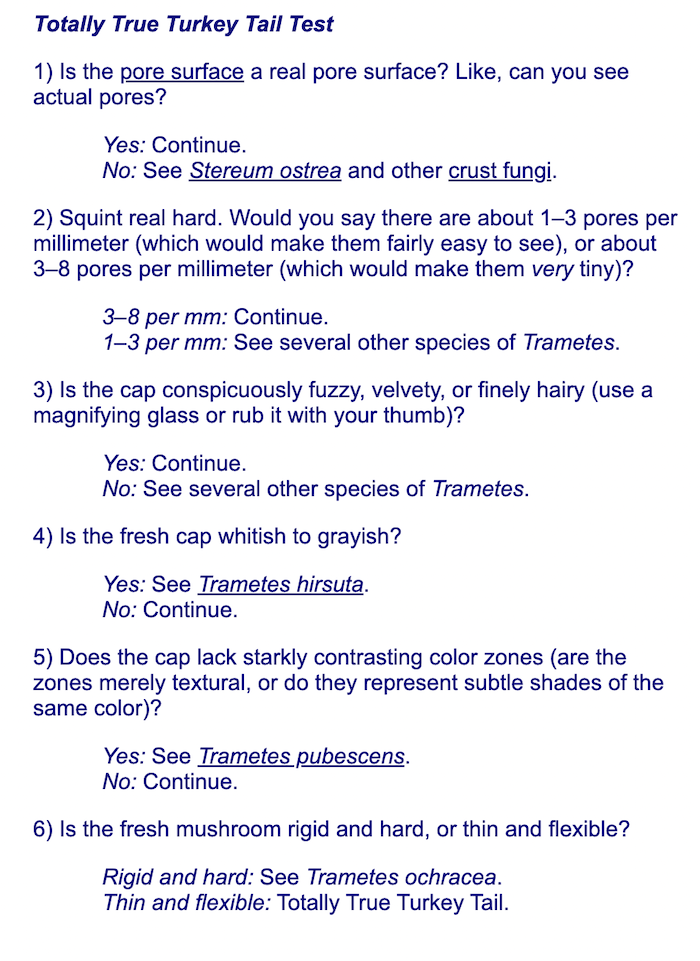
How to Prepare Turkey Tail at Home
We've put together a few tips and tricks in case you've just stumbled upon some wild turkey tail and want to take it home.
1. Only pick what you plan to utilize
In order to preserve the presence of mushrooms year after year, only take what you absolutely plan to use for teas or tinctures. Always leave at least half of what you find available to ensure long-term and sustainable harvesting practices.
2. Simply pluck them from the wood
You likely won't need a harvesting knife to harvest turkey tail. Gently wiggle the mushroom at the base - where the mushroom meets the wood, and pluck it off the tree.
3. There's no need to wash them
Unless they're particularly dirty, there's really no need to thoroughly wash your wild turkey tail mushrooms. Many sites warn against getting your mushrooms wet. But we are firm believers that safer is better. If you think your mushrooms could use a quick wash, it's not a problem. Mushrooms get wet in the wild all the time. Just know they may take a bit longer to dehydrate if you clean them first!
4. Use a brush or soft cloth to clean the surface and pores
Once you're confident your mushrooms are cleaned of any major messes, use a mushroom brush or toothbrush to very gently brush away dirt and buildup from the mushroom's surface and underside. It's common for dirt to get caught in the mushroom pores. Use circular strokes to loosen any soil from your mushroom.
5. You can use them fresh in a tea, or dry them for long term storage
If you plan to make a turkey tail tea with your fresh harvest, there is no need to dry them. But, if you plan to store them for use later, drying is a good idea. We put together a complete guide to drying mushrooms here.
If you have a dehydrator, place your mushrooms in a single layer and dehydrate on low heat until they're completely dried.
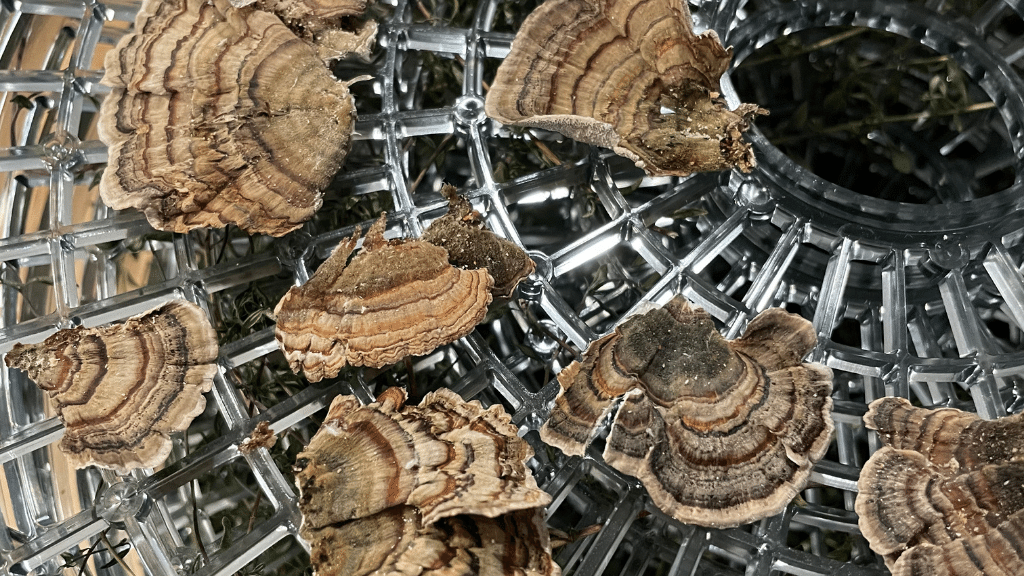
Did you know that fully dehydrated and properly stored mushrooms can last up to 12 months in storage? That's right!
Since turkey tail mushrooms aren't exactly edible (they're safe to eat, but their tough texture makes them undesirable to cook or eat raw...) you'll want to dehydrate them for future planned use in tinctures, teas, and recipes.
6. Freeze your mushrooms for 24 hours if you plan to powder them
Freezing your turkey tail mushrooms for 24 hours will ensure any parasites living in the mushrooms will die. This is an important step if you don't plan to heat them for tea or soak them in alcohol for tinctures.
How to use turkey tail mushrooms
If you stumbled upon a turkey tail jackpot and are excited to try some medicinal applications, we have a few ideas for you!
1. Make turkey tail tea
Turkey tail tea is incredibly easy to make at home. All you need is turkey tail mushrooms, fresh water, a sturdy pot, a fine strainer, and anything you'd like to use to enhance the flavor of your tea.
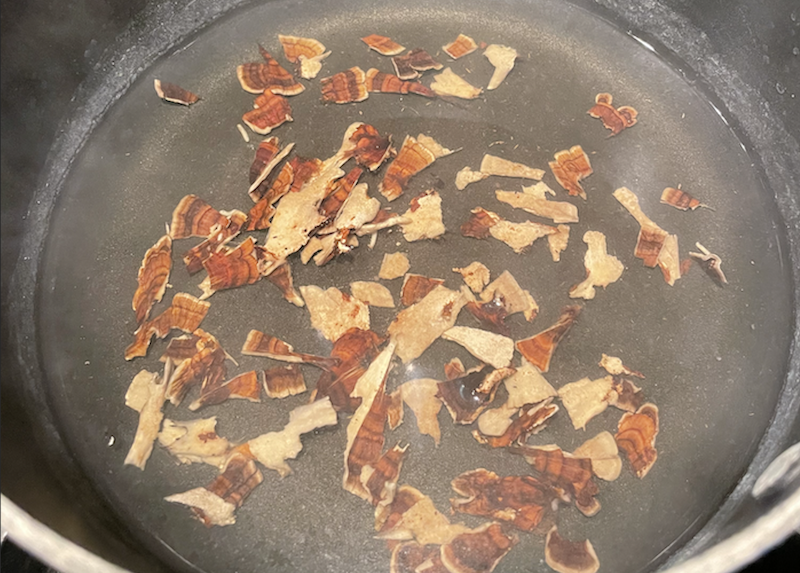
How to make turkey tail tea:
- Prepare your turkey tail using the steps above
- Depending on how strong you want your tea to be, experiment with how much you add. In general, you'll probably want to grab 3-7 mushrooms (depending on their size) per cup of water. Use more or less depending on how potent you want your tea to be.
- Cut or rip your turkey tail mushrooms into small pieces. They need to be large enough to be strained out of your tea, but small enough to generate more surface area
- Add your turkey tail to a sturdy pot
- Add around 1 1/4 cups of water per serving to the pot
- Gently bring your pot of water and the mushrooms to a low simmer. You do not want the mushrooms to boil! Keeping an eye on your tea while it is simmering is important to maintain that light simmer. Simmering releases the medicinal compounds within the mushrooms. Boiling the water risks burning them.
- Allow your mushrooms to simmer for between 12-15 minutes.
- Strain your mushroom tea into two mugs and enjoy while still hot!
Here's a great short clip that shows you how to prepare and make turkey tail tea at home.
What does turkey tail tea taste like?
Turkey tail tea is earthy, mushroomy, and slightly bitter. Some people really enjoy it! But if it's not for you, try adding a bit of honey, lemon, or ginger to offset the taste.
2. Make turkey tail tincture
Turkey tail tincture is a dual extract of turkey tail mushrooms and involves two distinct processes:
- Alcohol extraction
- Hot water extraction
Tinctures have been used medicinally for thousands of years. They enable you to take advantage of the functional applications of turkey tail mushrooms for months at a time. Simply add your tincture to your morning tea or coffee. Or take it directly under your tongue.
The tincture-making process may seem overwhelming. But it's easier than you think. Just note that tinctures take a long-time to make. Many tincture recipes call for the turkey tail mushrooms to sit in alcohol for 4-8 weeks before moving on to hot water extraction.
Despite the lengthy turnaround, we like to think it's worth the wait!
Check out this short video to learn how to make turkey tail tincture in just a few easy steps:
Can you eat turkey tail mushrooms?
Many polypores, like turkey tails, are listed as 'inedible' but that's not because they're unsafe to eat. Turkey tail mushrooms can be tough and chewy. And they don't taste particularly yummy. But they're very popular in teas, tinctures, and other supplement forms.
Raw turkey tails won't have as much functional or medicinal benefit as mushrooms that have been extracted with hot water.
What are the benefits of turkey tail mushrooms?
There are many potential benefits of turkey tail mushrooms. Recently, turkey tail has been studied for its applications as a cancer treatment and immune-booster. But more human clinical trials need to be completed.
The potential benefits of turkey tail mushrooms may include:
- Cancer treatment when taking alongside chemotherapy. This includes treatment for lung cancer, breast cancer, leukemia, and more
- Immunotherapy
- Gut health
- Antibacterial properties (e.g., salmonella or staph)
- Efficacy of certain cancer treatments
- Combatting HPV
- Inflammation
- Athletic performance (increased energy)
- Insulin resistance
- Phlegm reduction
- Pulmonary disorders
Want to keep learning about turkey tail mushrooms? Check out our free learning center today!



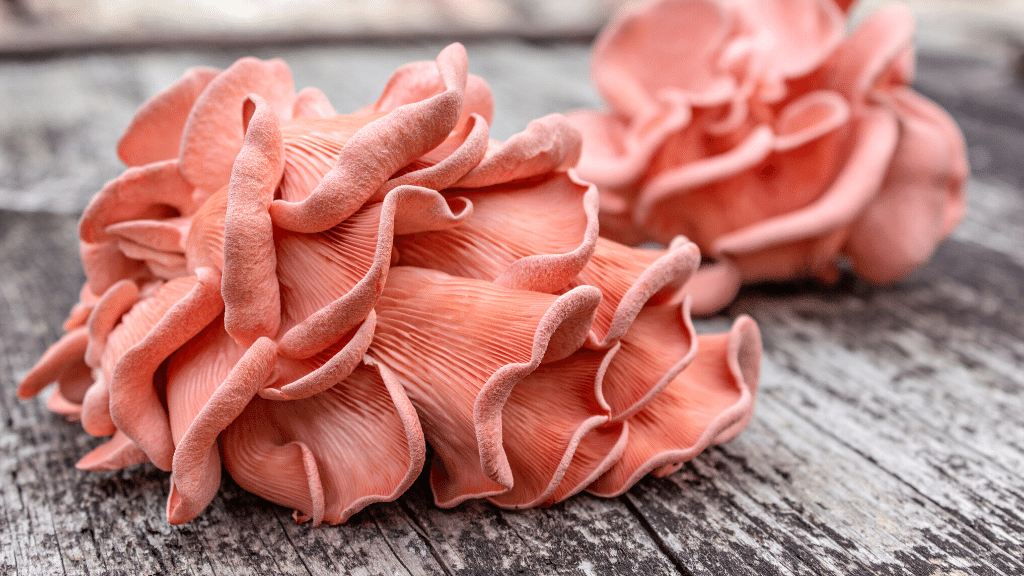


.png)
